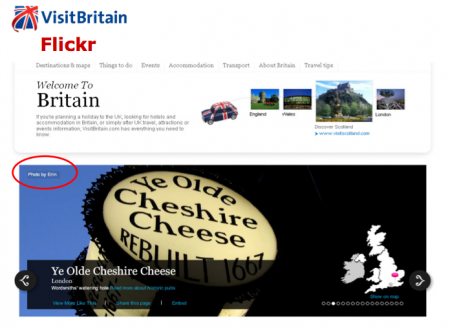
Somebody emailed me this webcast where Justin Reid from VisitBritain shares their social media strategy, examples, results and learning. Very insightful. Here are my key take-aways.
People don’t make a travel decision on a national tourism board website
Justin said: “Our research told us that the majority of long haul travelers visit a national tourist board after they’ve already made the decision to visit”
VisitBritain’s rightly concluded that in order to target people in the decision making process, they need to engage in other places like third party websites. A content partnership with Yahoo is working very well for them for example.
The future of CRM/eMail Marketing is under threat
Justin said: “Where previously you might have focused a lot of CRM activity we learned that the inbox is no longer a happy place. People want to clear it out as fast as possible. So we now want to focus on finding places where people are in the mindset of making decisions about travel [social media].”
I wondered about the same thing about a year ago in this blog post. As people become overwhelmed with email, they pay less attention to marketing messages, even when they opt-in. This kind of change won’t happen overnight but social media is an environment where people are easier to engage, two-way dialogue is possible and content is easy to share.
Social Media’s network effect has incredible reach
Justin: “10,000 followers is amazing. But we followed the traffic of some of our tweets and each of our tweets reaches a potential audience of about 325,000 people”
Through re-tweets on Twitter, and by tagging and sharing on Facebook, a message can travel far and wide in a very short period of time. And the content itself is much more credible because it’s endorsed by a friend who shared it.
Tourism Australia’s fanpage with over 600,000 fans is a good example. Every message they posts could be read by that many people. And for every person that comments on the post, the post gets published to their friend network, extending reach with the potential to organically grow their fanbase.
And as a side-effect, “Facebook is now the third largest referrer to VisitBritain after Google and Yahoo, and we’re not even seeking to push people to the website.”
Content is far more important than a website
Justin: “Our website is not the most important marketing tool for us, our content is. We’re just as happy if somebody reads our content on Yahoo as on our website.”
VisitBritain is agnostic about where content is being consumed and as a result, more of VisitBritains content is being consumed on third party websites. A partnership with Yahoo produces an exponential amount of views, for free. More videos are viewed than some market websites receive visitors.
Producing or gathering the right content, and pushing it out into place where you add value for the publisher and the consumer, preferably with easy sharing opportunities is much more effective than trying to generate website visitation through advertising alone.
User Generated Content is an easy and cost-effective way to publish content
Justin: “95% of VisitBritain’s photography comes from user generated content” and “when somebody’s photo appears on a national tourism boards site, you can bet on it they will send a link to all their friends to check it out.”
VisitBritain set-up a Flickr group called Love UK and is using it as one of the sources for its photos on VisitBritain.com. And because most people are happy to see their photography used, they will tell everybody about it.. on social media.
Brilliant. This is something I’ve advocated for years but I could never get it going. Well done VisitBritain.
Thanks for sharing Justin!
Tags: CVB, DMO, europe, presentation, social media, twitter, visitbritain, word-of-mouth
